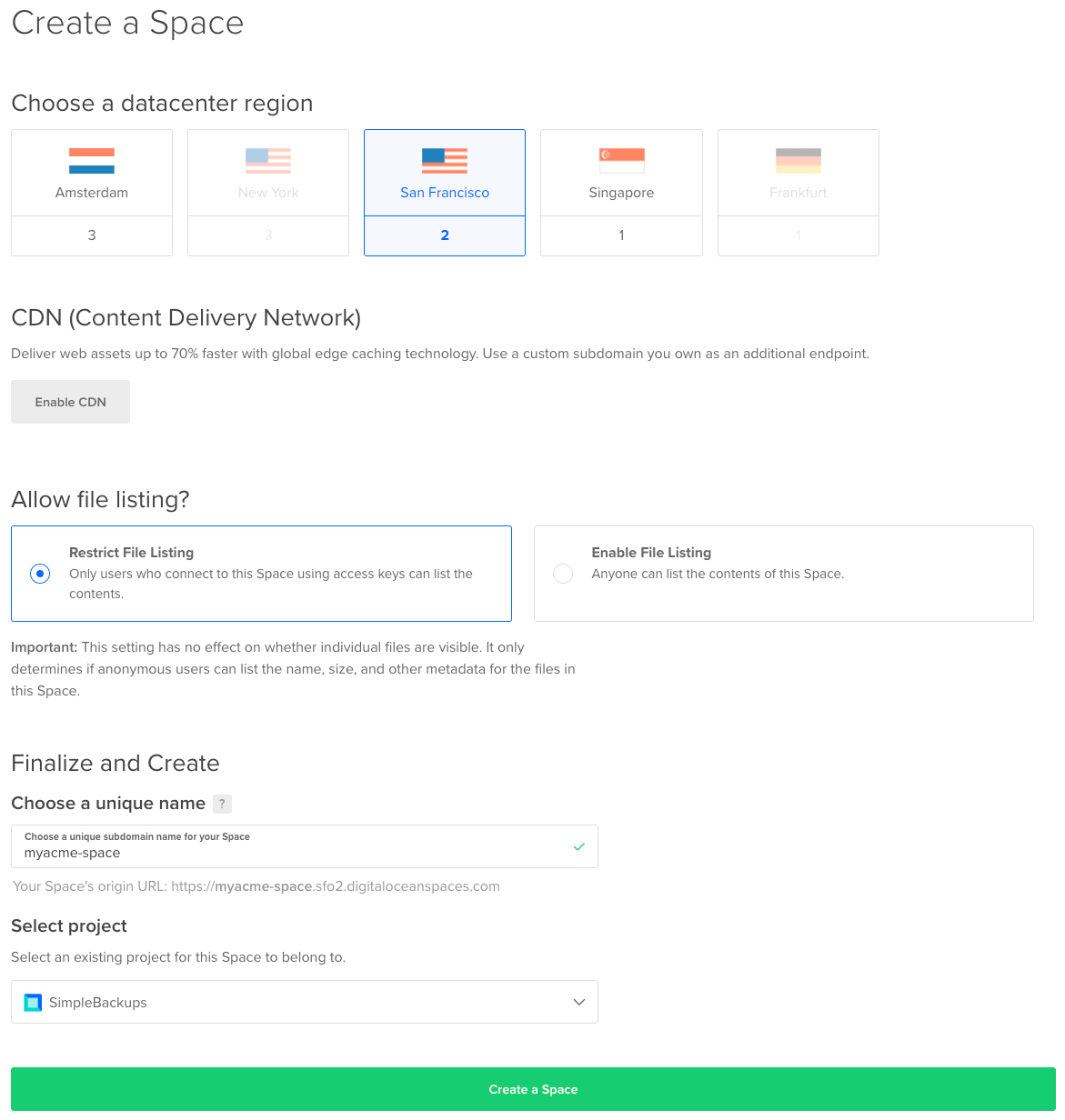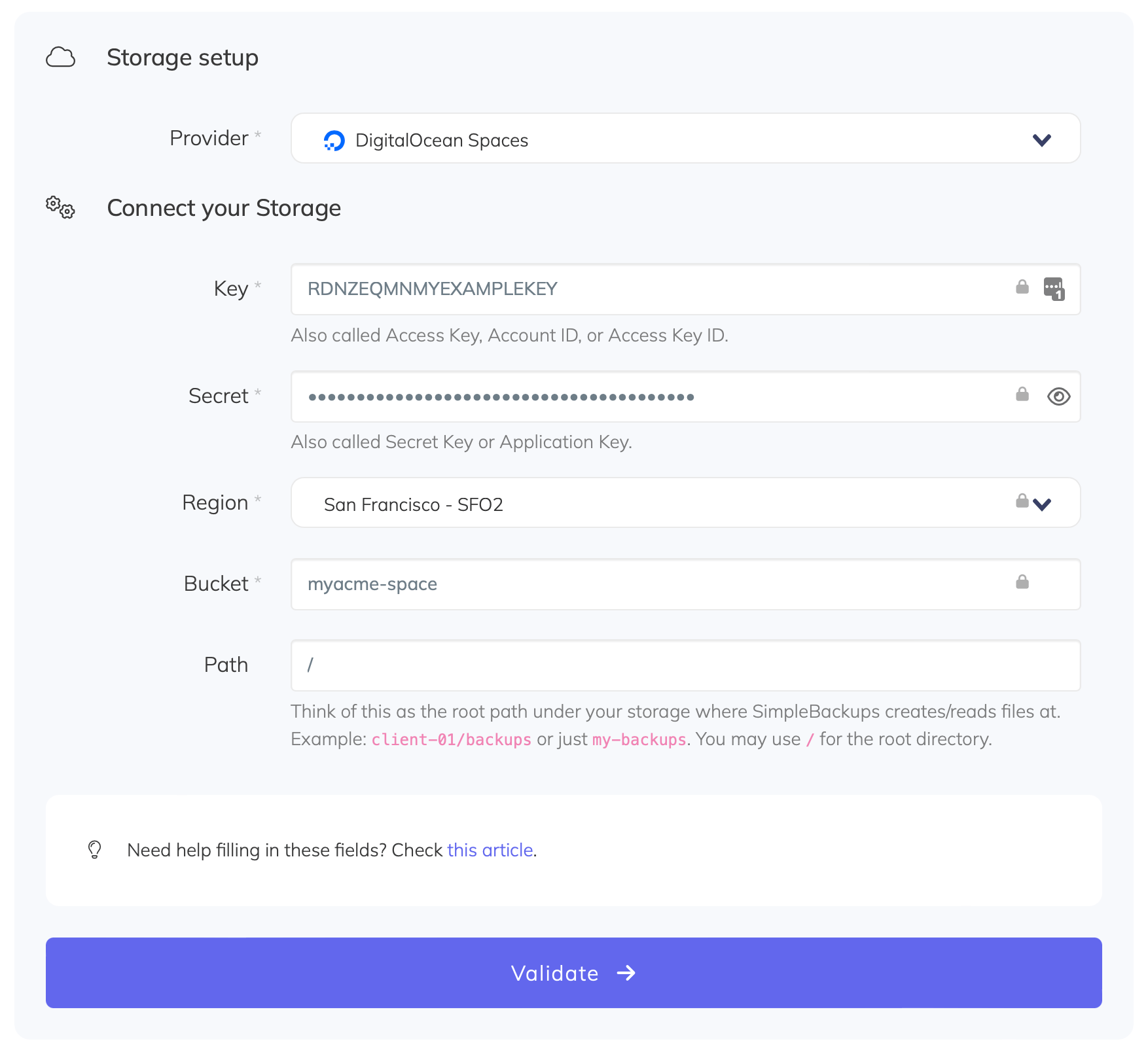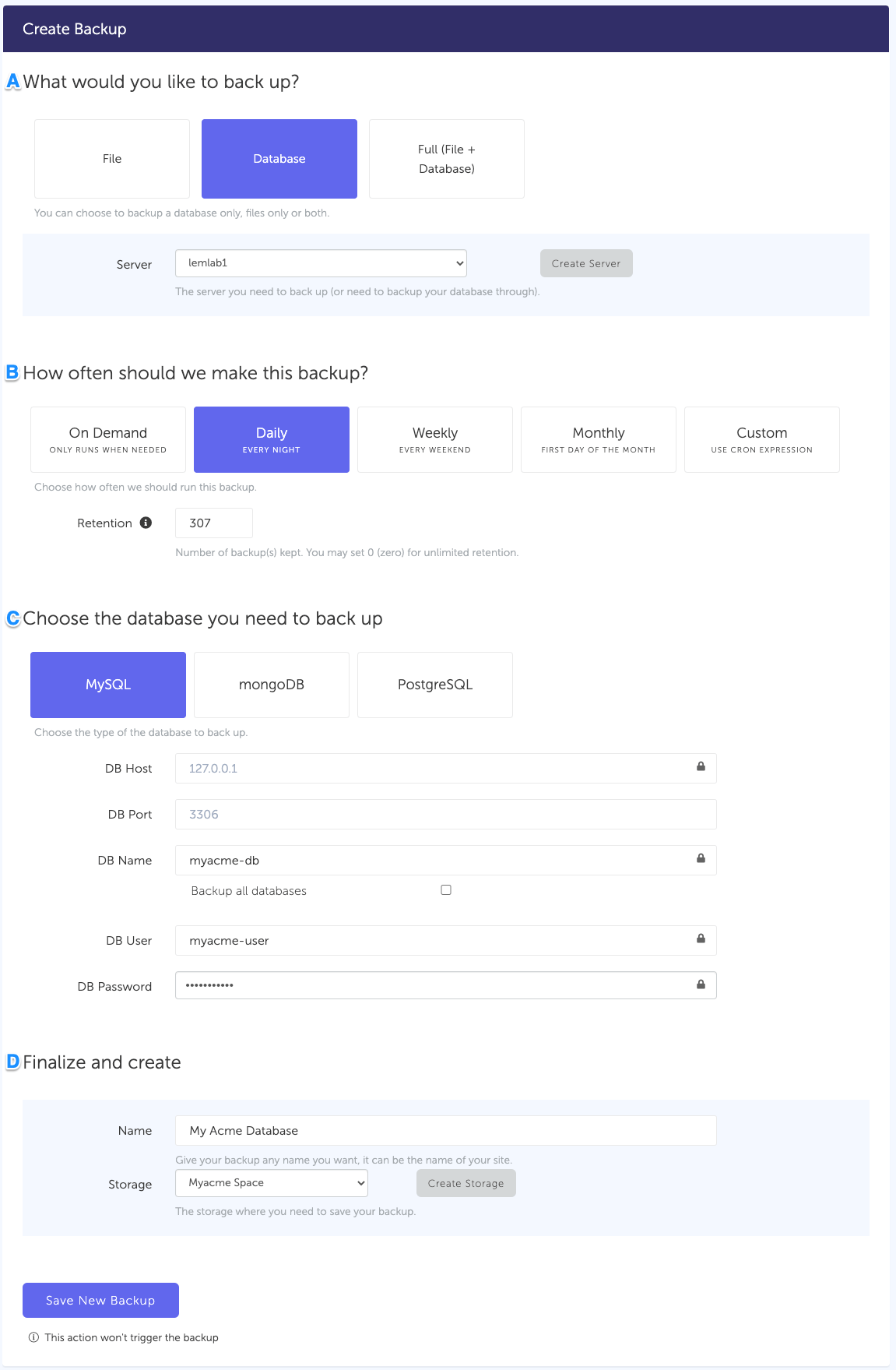MySQL database backup stored in your personal DigitalOcean Spaces.
With SimpleBackups, you can backup MySQL database to any cloud storage provider. In this article, we will find out how to configure your MySQL backup and store it on DigitalOcean Spaces.
Prerequisites
- Create a SimpleBackups account
- Make sure you have your server connected to your account (the one on which your MySQL database is hosted)
- Have a DigitalOcean account (I'll show you how to create your DigitalOcean Space below)
1. Create your DigitalOcean Spaces
-
Create a new "Spaces" using the create menu at the top right

- Fill in the "Create Spaces" form
- Pick the region you need (think about GDPR rules, if you're an EU company)
- Select "Restrict File Listing"
- Pick a name you like and link it to your DigitalOcean project (doesn't really affect us)
That's it! Your DigitalOcean Spaces is now created.

Don't leave the DigitalOcean interface, we'll now have to create your credentials.
Information you'll need in step 3:
- Your "Spaces" name, in this case "myacme-space"
- Your "Spaces" Region, in this case "San Francisco 2", which you can also see in your DO Space url
2. Create your DigitalOcean Credentials
Getting your DigitalOcean Spaces setup, was easy, ... and so will be getting your credentials! We've covered how to get this done in a how to create a DigitalOcean Spaces credentials. Follow this simple article and you'll get the access created in ... less than 2 minutes.
Information you'll need in step 3:
- Key
- Secret
3. Connect your Space to SimpleBackups
- Log into SimpleBackups and head to the connect your storage page
- Pick "DigitalOcean Spaces" as storage provider and fill in the "Connect your storage" form with the information from step 1 and 2.

You'll have to input :
- Key: Key described in (step 2)
- Secret: Secret described in (step 2)
- Region: Spaces region described in (step 1)
- Bucket: Spaces name described in (step 1)
- Give your storage a name (usually we like to use the Spaces name) and click on "Save new storage".
You'll be redirected to the list of storage where you'll find your newly connected storage.

4. Final step: Create your MySQL backup
Let's now go to SimpleBackups and get that backup configured.
From this screen you'll be able to configure what data you're backing up (MySQL in this case), where you want it to be saved (in this case your DigitalOcean Space), and how often you want this to be done.
FYI this section will be the same, no matter what storage you pick. And that's the beauty of it, if you want to change storage, just select another one from the list (Backblaze, AWS, or whatever you might prefer) and you'll be good to go.

What would you like to back up? (A)
- Select "Database" (in this article we're creating a MySQL backup only)
- Select the server on which your database is hosted
How often should we make this backup? (B)
-
Select your schedule option (here we picked a daily schedule)
You can select a pre-defined schedule (daily, weekly, monthly) or a custom option allowing you to schedule it whenever you want to use CRON syntax.
-
Example of CRON schedule for "20:00 every Tuesday" =
0 22 * * 2Finally, the "On demand" option won't schedule anything but will allow you to trigger the backup manually or using our API.
-
Define the backup retention, which is the number of backups you want to keep (kind of the history length of your backup if you prefer)
Choose the database you need to backup (C)
- Select the type of your database, in this case "MySQL"
- Fill in the database connection form
Finalize and create
- Pick the name of your backup (this is how it will be displayed in SimpleBackups interface) and where you want to store it.
- Select your Storage (step 3)
That's it, your MySQL backup is now ready and connected to your DigitalOcean Spaces.
Run it once manually (using the "Run" backup button from the backups list) and you'll trigger your first backup!